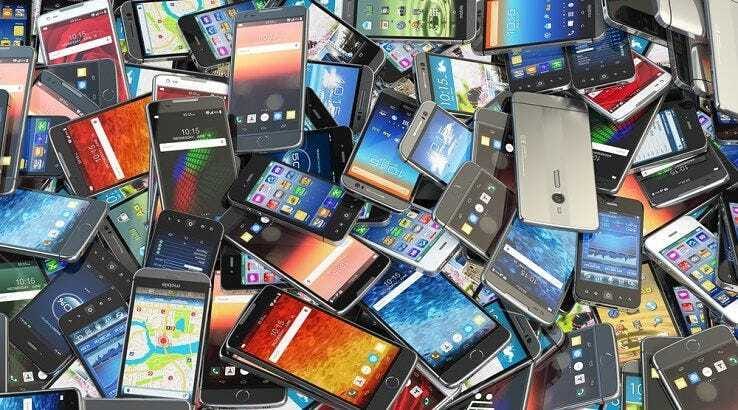I own multiple devices that serve different purposes: an iPhone, a Samsung phone, an iPad 12.9 Pro, a Chromebook, a Mac Mini, a Lenovo laptop, a Kindle e-reader, and a Boox e-ink tablet. I am guilty of replacing my phone almost yearly, even when it is still in good condition. I hope to improve and keep only the devices I need and use daily.

I have several older but still usable devices currently stored in a drawer. 🙄
However, I enjoy trying new toys and innovations like foldable phones. It's a brilliant idea that could save a lot of money by combining the functions of a tablet and a phone.
After reading an article about valuable metals and elements in iPhones that could run out in the next century, I realized that I hadn't considered the impact of my daily device usage and climate change. I now wonder if I should buy new devices less frequently.
In this blog post, I delve deeper into what I have learned about device components and explore what we can do in the future.
As one of the most ubiquitous consumer electronics devices, the iPhone has become a symbol of our connected world. But few people realize their beloved iPhone is also filled with valuable metals and elements that are becoming increasingly scarce. The production of these metals and elements is also linked to some of the world's most significant environmental and social problems.
The metals and elements used in iPhones are essential to the device's functioning. The following sources provide information on the metals and components used in iPhones in the last two years:
The iPhone 12 is free of harmful substances like beryllium, brominated flame retardants, PVC, phthalates, arsenic in the display glass, and mercury.
The iPhone contains 30 chemical elements, including well-known metals like aluminum, copper, lithium, and silver.
Every piece and part of the iPhone stems from one of the many raw materials extracted worldwide. Gold comes from Peru, and copper from Chile.
Rare earth elements, or REEs, are 17 elements crucial to the functioning of many modern technologies, including personal electronics like smartphones, laptops, and tablets. Despite their name, REEs are not rare but difficult to extract and refine. As a result, China currently produces over 80% of the world's supply of REEs.
Many people use REEs every day without even realizing it. These elements are hidden in common personal electronics, including the magnets in hard drives and headphones, the screens in smartphones and tablets, and the batteries in laptops and electric cars. They are also used in wind turbines, solar panels, and medical equipment.
If you use an iPhone, an REE called lanthanum helps ensure the screen has a vivid color pop, while neodymium and dysprosium are credited for helping the device vibrate, among other uses. In electric cars, magnets, which help power the vehicle, rely heavily on rare earths such as neodymium.
But not just the supply of these metals and elements is a concern. The production of these metals and elements is also linked to environmental and social problems. For example, the production of tin and tantalum, two critical elements in the iPhone's circuit boards, is linked to deforestation and human rights abuses in countries like the Democratic Republic of Congo. Similarly, the production of aluminum, another essential metal in the iPhone, is one of the world's largest sources of greenhouse gas emissions.
The issue of responsibly sourcing and using these metals and elements is becoming increasingly critical as we move towards a more sustainable future. If we continue to rely on unsustainable methods of production and consumption, we risk running out of these critical resources and jeopardizing global climate goals. But there are things we can do to help.
As the world shifts towards a greener economy, there are concerns that the critical metals used to make electronic products like smartphones could face a shortage. These metals are an essential part of the transition to a greener economy. A shortfall could jeopardize global climate goals of limiting global temperature rise to 1.5 degrees Celsius above preindustrial levels by 2100. This is a critical turning point for the damage caused by global warming to our planet, and a shortage of these irreplaceable metals could undermine efforts to combat climate change.
Researchers are exploring alternatives to rare earth elements (REEs) that are more sustainable and widely available. Some of these alternatives include:
Magnesium: Magnesium can be used as a substitute for neodymium in some applications, such as wind turbines. Magnesium is abundant in the earth's crust and has a much lower environmental impact than rare earth mining.
Silicon: Silicon is another material that can be used in place of some rare earth elements. For example, silicon can be used as a substitute for cerium in polishing applications.
Iron: Iron can be used instead of dysprosium in some high-strength magnets. Iron is abundant and less expensive than rare earth elements.
Carbon nanotubes: Carbon nanotubes are being explored as a substitute for indium used in touch screens. Carbon nanotubes are more sustainable than indium and could also improve the durability and flexibility of touch screens.
Organic materials: Researchers are also exploring organic materials that could replace rare earth elements in some applications. For example, organic compounds could replace europium in lighting applications.

Otherwise, to avoid a potential shortage of critical metals used in electronic products, we could take several actions:
Reduce consumption: One of the easiest ways to address the shortage of critical metals is to reduce our consumption of electronic products. We can do this by using our devices for longer periods, repairing them instead of replacing them, and recycling them when they end their life.
Recycle: Another way to address the shortage of critical metals is to recycle electronic products. Recycling can help recover valuable metals and reduce the need for new mining and extraction, which can damage the environment.
Develop new technologies: Researchers are exploring new technologies that use alternative materials to reduce our dependence on critical metals. For example, some companies are developing solar panels that use different materials that are more widely available, reducing the need for rare earth elements.
Increase investment: Governments and companies can invest in research and development of alternative sources of critical metals, such as deep-sea mining, which could provide a new source of these materials.
Support responsible mining practices: Companies can prioritize responsible mining practices that reduce the environmental impact of mining and protect the rights of workers and local communities.
I checked the environment progress report on Apple.com, and I am pleased that they did make some progress, but I see that some REE materials are still used. However, as said in the report, many of the metals and elements in iPhones can be recovered and reused, reducing the need for new production.
Another way to reduce the impact of our electronic devices is to choose products designed with sustainability in mind. Apple's recycling program allows users to return their old iPhones for free, where they can be disassembled, and the metals and elements can be recovered. Not only that but also companies like Fairphone and Shiftphone are creating smartphones designed to be repairable and upgradeable, reducing the need for new products and extending the life of the device.
In conclusion, producing metals and elements used in electronic devices, including iPhones, is linked to significant environmental and social issues. As we move towards a more sustainable future, we must take action to reduce our consumption, recycle our devices, and support responsible mining practices. Researchers are exploring alternatives to these critical metals, and companies are designing products with sustainability in mind. Doing so can help ensure that our love for technology doesn't come at the cost of our planet's health and well-being.
Source:
https://www.vice.com/en/article/433wyq/everything-thats-inside-your-iphone (published in 2017)